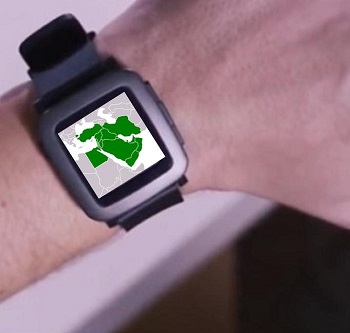The MLB has now given its approval for the use of wearables throughout its current season.
The Major League Baseball (MLB) playing rules committee for the sport has now given its approval for the use of either of two different wearable technology devices during the games throughout the current playing season.
The two wearable devices that have received the MLB’s approval aren’t exactly the usual Fitbit.
Instead, the first is the Motus Baseball Sleeve, which is wearable technology for gauging stress to the elbows of a player. The second is the Zephyr Bioharness, which monitors breathing and heart rates of the players. Aside from those two, the committee has also gone ahead to give their approval for a couple of sensors for the baseball bats. Those bat sensors are to be used on the field during workouts, as opposed to during the games themselves. The first of the sensors is from Blast Motion while the second is from Diamond Kinetics.
The goal is to use wearable technology to identify player habits that may eventually lead to injuries.
 That said, the players union has expressed some concern with regards to the use of wearables and maintaining player privacy. It wants to ensure that the information collected by the teams will respect the privacy of the players. Both sides of this discussion have agreed that there will need to be talks throughout the bargaining that will occur this year.
That said, the players union has expressed some concern with regards to the use of wearables and maintaining player privacy. It wants to ensure that the information collected by the teams will respect the privacy of the players. Both sides of this discussion have agreed that there will need to be talks throughout the bargaining that will occur this year.
At the time of the writing of this article, none of this information had been officially announced. Instead, people with knowledge of this subject were willing to share what they knew with the media in exchange for anonymity.
Technically, this is not the first time the sleeve wearable tech received approval. Last year, the committee gave provisional approval for that device. That said, this does represent the first time that full consent was given for the use of this or any other wearable device by the MLB.
The committee that gave the approval for the wearable technology device use consisted of Chris Antonetti from Cleveland, John Schuerholz from Atlanta, Terry Ryan of Minnesota, and John Mozeliak from St. Louis.
Companies throughout that region are taking a closer look at wearable technology and are making investments.
Businesses throughout the Middle East are starting to look at wearables more seriously and this is being reflected in the growing investment that is being seen in these types of mobile devices.
That said, this doesn’t mean that there aren’t any more barriers in the way of the growth of this industry.
Organizations throughout the Middle East are increasingly starting to build business models based on the use of werables. Predictions from industry analysts are suggesting that over the next three years there will be substantial growth seen in the use and investment into wearable technology. Among the reasons that this industry is being driven forward is that there is a broader availability to the type of devices and features that are available, but also they are becoming more familiar.
As certain types of wearables become more mainstream, it opens the door to the adoption of others.
 The region is about to see the launch of a whole new wave of everything from smartwatches to virtual reality headsets and even connected clothing. As a result, the wearable technology market in the Middle East and Africa (MEA) region is expected to see a growth rate of 56 percent from 2016 through 2019. This according to forecasts released by IDC.
The region is about to see the launch of a whole new wave of everything from smartwatches to virtual reality headsets and even connected clothing. As a result, the wearable technology market in the Middle East and Africa (MEA) region is expected to see a growth rate of 56 percent from 2016 through 2019. This according to forecasts released by IDC.
The fact that wearable technology devices are convenient, lightweight and small forms of mobile gadgets that allow people to complete various types of task either hands free or at least without having to take their smartphones out of their pockets, they have a considerable draw within the business community. Smartwatches are drawing a particularly large amount of attention as they can act as scaled down versions of smartphones combined with fitness trackers.
IDC MEA analyst, Feras Ibrahim explained that while the market for wearables is seeing a substantial growth, the hurdles that are still faced should not be forgotten or overlooked. Among the leading issues standing in the way is in the limited number of apps that are geared toward these tiny screen devices. Moreover, many of the designs are clunky or require a premium price point for a device that would suit business attire.
 That said, the players union has expressed some concern with regards to the use of wearables and maintaining player privacy. It wants to ensure that the information collected by the teams will respect the privacy of the players. Both sides of this discussion have agreed that there will need to be talks throughout the bargaining that will occur this year.
That said, the players union has expressed some concern with regards to the use of wearables and maintaining player privacy. It wants to ensure that the information collected by the teams will respect the privacy of the players. Both sides of this discussion have agreed that there will need to be talks throughout the bargaining that will occur this year.
 The region is about to see the launch of a whole new wave of everything from smartwatches to virtual reality headsets and even connected clothing. As a result, the wearable technology market in the Middle East and Africa (MEA) region is expected to see a growth rate of 56 percent from 2016 through 2019. This according to forecasts released by IDC.
The region is about to see the launch of a whole new wave of everything from smartwatches to virtual reality headsets and even connected clothing. As a result, the wearable technology market in the Middle East and Africa (MEA) region is expected to see a growth rate of 56 percent from 2016 through 2019. This according to forecasts released by IDC.